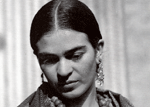20th and 21st Centuries Latin American Humanities Homework #8 |
1. |
Study the pages on Wilfredo Lam (under "L" in the Index), then answer question #1. Pick any TWO of the first eight (#1 to #8) in the Lam Index; first (A) describe each of them and then (B) compare and contrast them in your own terms; you may want to think in terms of lo real maravilloso and/or Modernism and/or surrealism and/or Latin American humanities throughout the centuries; but, most importantly is your analysis in your own terms. |
||
2. |
Read the textbook essay on "African notes on African slaves in Latin America and Afro-Latin American history and humanities" (under "A" in the Index)"; then focus on Section IV (pages 12-15) and (A) write down in a minimum of 50 words what you think is most important to know from the information in Section IV. |
||
3. |
In the Index, find the links for Ernesto Cardenal and his (very long, book-length) poem titled "Quetzalcóatl." You will find the original Spanish version and also an English translation with copious end notes. Choose and study only ONE of the 46 (numbered) poems that stands out to you based on your now complete introductory study of Latin American humanities. Then, tell how the poem you choose represents (a) early Latin American humanities and culture, (b) twentieth-century Latin American humanities, and (c) the theme of "the past in the present and the present in the past." |
||
4. |
(A) Identify these two images by telling what kind of humanities artifact they are and who they represent. (B) What do the two humanities objects have in commmon as art works and what diferentiates them? (C) What was Diego Rivera's relationship to the subjects in each image and what is your personal reaction to the fact that Diego Rivera has something to do with both of them?
|
||
5. |
(A) Name three (3) major aspects discussed in the HUM2461 textbook that define vanguardismo. |
||
6. |
(A) Name three (3) major aspects discussed in the HUM2461 textbook that define so-called Magical Realism (lo real maravilloso). |
||
7. |
In Canto VI in Neruda's monumental poem Heights of Machu Picchu, (A) in what way do you see the reality of (the ruins of) Machu Picchu in the images in this canto? (B) How can we understand the relationship between Machu Picchu stones and "gentle hurricanes" in this canto's last two lines? (C) In your view, how is Neruda's celebration of Machu Picchu in this long and complex poem a universal expression of Latin America's "past in the present" and the "present in the past"? |
||
8. |
In Canto VIII in the Heights of Machu Picchu, the poet invites the reader—to whom he refers as "American love"—to come up with him. (A) To what is the beloved reader (i.e., this American lover, we the readers) being invited in the rest of this Canto VIII? (B) How do you interpret the last two lines of this Canto VIII? |
||
9. |
Look at the Key Terms page in the online textbook and find the definitions of this term: Exile / Diaspora. (A) Mention major features of this term; (B) In what way do you think this key Latin American (humanities) theme is particularly apt when thinking about the 20th century and 21st century? |
||
10. |
(A) Compare and contrast the following buildings: Rio de Janeiro #22 (including 22a, 22b, 22c); Brasília #12 (including 14, 14a); Basílica de Guadalupe #1, #2, and #3. (B) What do they tell you about 20th century Latin American humanities? |
||
11. |
(A) Answer the questions A and B in Guatemala City #6. (B) Refer to some of the pertinent information on the Cuba country page in the online textbook when you are answering the questions in Guatemala #6. It will be helpful to look at the information in the online textbook pages for Guatemala #8 and Guatemala #8a, b, c, d, and e. |
||
12. |
Study the sequence of four images (#11, #11a, #11b, and #11c) for a 20th century mural sequence by Alberto Gálvez Suárez in Guatemala City. (A) Then choose one of the images and answer the humanities question embedded in the description and comments on that page. |
||
13. |
Look at the statement about the contemporary (but late) Chilean writer Roberto Bolaño in the Notes on Literature found on the Twentieth-Century Index page in the online textbook. Then, with the information you find there, (A) answer the questions found in the page on Bolaño: 2666 Book Covers. |
||
14. |
In the Index and in Notes on 20th and 21st Century Literature, find the paragraph on Daniel Alarcón and the page on his graphic novel. Answer the three questions on the graphic novel page. |
||
15. |
Read the essay about a Cuban jazz musician by Leonardo Padura ("Chano Pozo's Sad Night"); then answer these two questions: (A) What does the article's writer tell the reader in the first four paragraphs in the essay? (B) How does Padura situate the presence of the Afro-Cuban Yoruba Orisha of Changó (a spirit in the Cuban Santería religion) throughout the story of Chano Pozo's life? |



